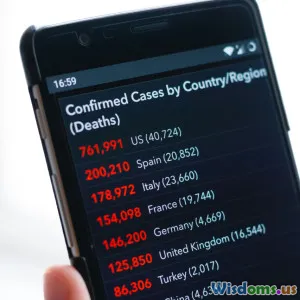
Inside a Vulnerability Assessment Workshop for Beginners
8 min read Explore the essential steps and insights from a beginner's vulnerability assessment workshop, empowering you to identify and manage security risks effectively. (0 Reviews)
Inside a Vulnerability Assessment Workshop for Beginners
Cybersecurity is more crucial today than ever before. From small startups to multinational corporations, every organization is a potential target for cyber threats. One of the foundational pillars in an organization's cybersecurity arsenal is vulnerability assessment — a structured process aimed at discovering and mitigating security risks. But what exactly happens inside a vulnerability assessment workshop designed for beginners? How can novice learners gain practical, tangible skills in this domain?
In this in-depth article, we journey inside such a workshop, peeling back the layers of theory and real-world application, providing a clear roadmap for beginners eager to enter the cybersecurity landscape.
What Is a Vulnerability Assessment Workshop?
At its core, a vulnerability assessment workshop is an educational and hands-on training session focused on teaching participants how to identify, analyze, and prioritize security weaknesses in computer systems, networks, and software.
Unlike penetration testing, which attempts to exploit vulnerabilities actively, vulnerability assessment focuses on detection and reporting. Workshops designed for beginners often emphasize fundamental concepts, use approachable tools, and simulate scenarios that mirror actual security environments.
Setting the Stage: Objectives and Expectations
Workshop facilitators typically open the session with clear objectives. For example, a standard beginner-level workshop may aim to:
- Introduce the concept and importance of vulnerability assessment.
- Familiarize participants with common types of vulnerabilities such as misconfigurations, outdated software, and weak passwords.
- Teach the usage of essential vulnerability scanning tools like Nessus, OpenVAS, and Nmap.
- Explain how to analyze and prioritize findings.
- Present reporting techniques to communicate risks effectively.
These objectives ensure learners leave with practical skills and a foundational framework.
Step 1: Understanding the Vulnerability Landscape
Common Vulnerabilities
A critical first step involves dissecting typical vulnerabilities:
- Software Vulnerabilities: Bugs and flaws in applications and operating systems.
- Configuration Issues: Default or weak settings that attackers exploit.
- Network Vulnerabilities: Open ports and weak protocols.
- Human Factors: Social engineering gaps like phishing susceptibility.
For example, the infamous Equifax breach in 2017 was primarily caused by an unpatched vulnerability in Apache Struts, highlighting the huge impact overlooked software issues can have.
CVE and CWE Frameworks
Learners are introduced to industry frameworks like the Common Vulnerabilities and Exposures (CVE) system and Common Weakness Enumeration (CWE), useful for categorizing and understanding vulnerabilities consistently.
Step 2: Tools of the Trade
Vulnerability Scanners
An experiential segment walks participants through tools such as:
- Nmap: Though primarily a network mapper, it’s instrumental in discovering open ports and services.
- OpenVAS: An open-source vulnerability scanner that checks systems against known weaknesses.
- Nessus: A widely-used commercial scanning tool offering comprehensive vulnerability detection.
Participants engage in scanning a controlled lab network. For instance, using Nmap to identify open ports on a simulated server, then feeding those insights into OpenVAS for detailed vulnerability checks.
Hands-On Example
In an actual workshop, learners might perform a scan on a deliberately vulnerable virtual machine (e.g., Metasploitable). This exercise illustrates how scanners detect outdated software versions or weak configurations.
Step 3: Analyzing and Prioritizing Findings
Once the scanner produces a report, students learn to sift through data, distinguishing critical issues from less severe ones. Prioritization follows risk-based models considering:
- Exploitability: Can this weakness be easily exploited?
- Impact: What would be the consequences of exploitation?
- Exposure: Is the vulnerable service visible to potential attackers?
For example, an open SSH port with default credentials represents a high-priority threat compared to an outdated browser plugin used internally.
Emphasizing triage helps organizations focus limited remediation resources effectively.
Step 4: Reporting and Communication
A commonly underestimated component, reporting involves documenting findings clearly and providing actionable recommendations. Workshops teach participants to:
- Use clear, non-technical language for executive summaries.
- Include technical details for IT teams.
- Suggest prioritization and mitigation strategies.
Sharpening these skills is essential; studies show that up to 40% of vulnerabilities remain unpatched because of poor communication between security teams and decision-makers.
Real-World Insights: Expert Tips From Facilitators
Many workshop leaders stress:
“Understanding the context of your environment is as crucial as the scanning itself. Tailor assessments to the organization’s risk profile.” — Jamie Lee, Cybersecurity Trainer
Also, the dynamic nature of vulnerabilities means continuous learning is essential. Several participants note:
“The hands-on labs demystified complex tools. Scanning a live network replaced classroom theory with confidence.” — Workshop attendee, 2023
The Learning Environment: Interactive and Collaborative
Effective workshops foster collaboration. Participants often split into teams, tackling scanning assignments then sharing findings. This peer learning builds critical thinking and problem-solving, accelerating growth.
Furthermore, trainers typically incorporate current threat intelligence updates to keep sessions relevant. For example, how recent supply chain attacks reveal vulnerability assessment’s growing importance.
Overcoming Challenges for Beginners
Vulnerability assessment can feel overwhelming due to technical detail and sheer information volume. Strategies employed include:
- Stepwise instruction, starting from simple scans.
- Avoiding jargon; focusing on concepts first.
- Providing resource lists like OWASP’s guides and official tool documentation.
Such approaches improve learner retention and confidence.
Conclusion: Empowering Beginners to Secure Their Digital Worlds
A vulnerability assessment workshop is not just about learning tools; it’s about developing a security mindset aimed at reducing risks in complex digital landscapes. For beginners, these workshops offer:
- Practical, fundamental cybersecurity skills.
- Direct experience with industry-standard tools.
- A framework for ongoing learning and risk management.
By embracing vulnerability assessment, novices start the journey toward becoming cybersecurity defenders. The real value lies not only in identifying weaknesses but transforming insights into fortified defenses.
Step into the workshop—and empower your path toward safer digital horizons.
Additional Resources for Aspiring Vulnerability Assessors
Embark on your vulnerability assessment journey today!
Rate the Post
User Reviews
Other posts in Cybersecurity
Popular Posts















